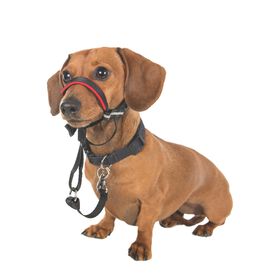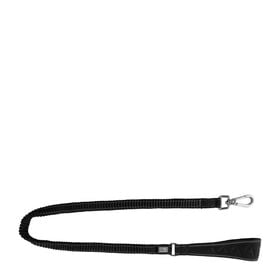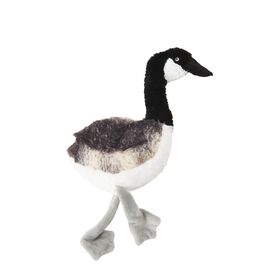The Weimaraner is nicknamed the grey ghost in part because of its distinctive grey coat, but primarily because of its hunting style, which has been described as furtive and similar to that of a cat. The Weimaraner also has an annoying tendency: it tries to disguise its scent by rolling around in anything stinky to make itself invisible to its prey.
Origins
Weimaraners are among a very old breed type, with evidence dating back to 13th century art and literature. It is believed that Weimaraners are descended from a pack of grey dogs (grey dogs of Saint Louis) that King Louis IX of France brought back from Palestine by during the 7th crusade, and are related to the griffons. These dogs were crossbred with such breeds as the Saint-Hubert hound, the short-haired Weimaraner and the English pointer.
The breed was standardized to its modern form at the court of Karl August, the Grand Duke of Saxe-Weimar-Eisenach in Germany, where it got its name. The 1800s saw the Weimaraner developed as a continental hunting breed that excelled in various types of game and hunting traits, including tracking, searching, pointing, retrieving and indicating the location of downed large game.
Physical appearance
The Weimaraner is a medium-size dog whose grey coat and light-coloured eyes set it apart from other hunting dogs. It should present a picture of great strength, endurance, alertness and balance. Above all, the dog’s conformation must indicate the ability to work in the field.
Weimaraners’ typical height ranges from 64 to 69 cm (25 to 27 in.) for the male and 58 to 64 cm (23 to 25 in.) for the female. They generally weigh between 25 kg (55 lbs) and 40 kg (90 lbs). Males are usually heavier because of their larger size. The body is relatively long, set in a straight line and perfectly proportioned, appearing almost square. The chest is deep and wide, extending almost to the elbow. The ears are oblong and hang down the sides of the head. The eyes, which characterize the breed, are light amber, grey or blue-grey. The expression is described as lovable, lively and intelligent.
Weimaraners come in two varieties: the more common and original short-haired Weimaraner and the long-haired Weimaraner. The long-haired variety has a flat, smooth and slightly wavy coat whose length on the flanks is 3 to 5 cm (1 to 2 in.), varying somewhat under the neck and on the chest, belly, ears and tail. There is also moderate feathering on the legs and chest. The tail of the short-haired variety is generally docked and, at maturity, measures 15 cm (6 in.). According to the breed standard, the tail of the long-haired variety should be natural and well-covered with hair.

Life expectancy and health
As rugged and hardy hunting dogs, Weimaraners average life expectancy is 11 to 14 years. Like many large breeds, Weimaraners have a higher risk of gastric torsion. The breed is also prone to such diseases as elbow dysplasia and various eye conditions, and such genetic disorders as cutaneous asthenia, hemophilia, von Willebrand disease, renal dysplasia and wobbler syndrome.
Energy level and temperament
Like all good hunting dogs, Weimaraners are highly energetic and will need to expend physical and mental energy to be happy and healthy. Long walks, hikes in the forest and canicross are excellent ways for these dogs to expend energy. They are not an independent breed and love to be with their owner. This can create very severe separation anxiety in the breed. It is therefore important to get Weimaraners used to being away from their owner from a very young age. They are, however, very affectionate dogs and make excellent family pets.

Maintenance
Weimaraners shed very little throughout the year, and a weekly brushing with a rubber grooming glove will help keep hair loss to a minimum. During the shedding season, once or twice a year, hair loss may be more abundant, and daily brushing is more appropriate. Weimaraners need only occasional baths. As with most breeds, nails must be trimmed regularly, since long nails can cause pain and foot problems. Since hanging ears are more prone to infection, especially if the dog tends to go swimming, it is important to clean and thoroughly dry them.
Well-known celebrities who were charmed by the Weimaraner include U.S. President Dwight D. Eisenhower, who lived in the White House with his dog Heidi, and actress Grace Kelly, who married Prince Rainier III of Monaco.
For more information, contact a registered breeder at the Canadian Kennel Club, who can answer all your questions. You can also contact the organization for information on breeders and the various breed clubs in Quebec and elsewhere in Canada.








